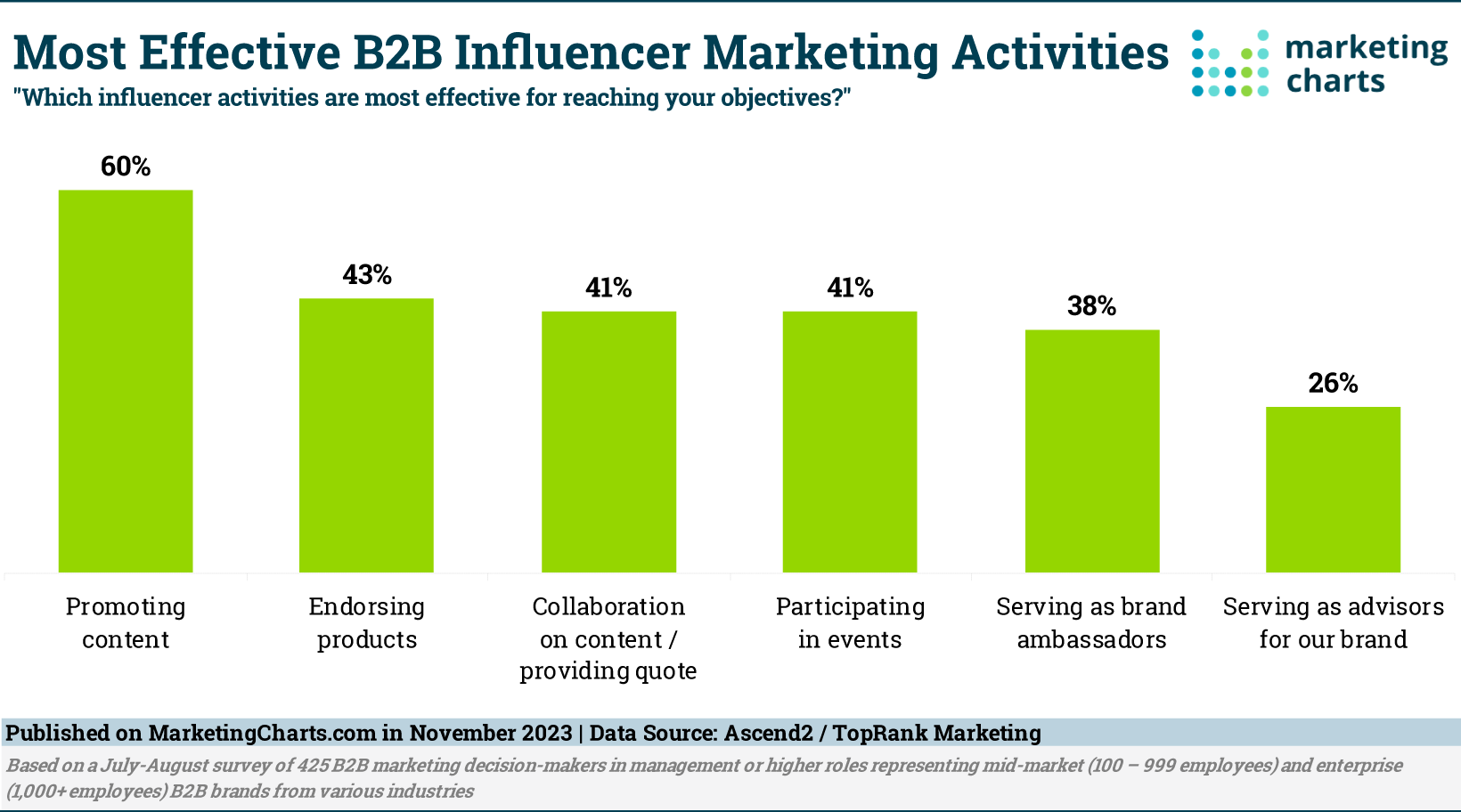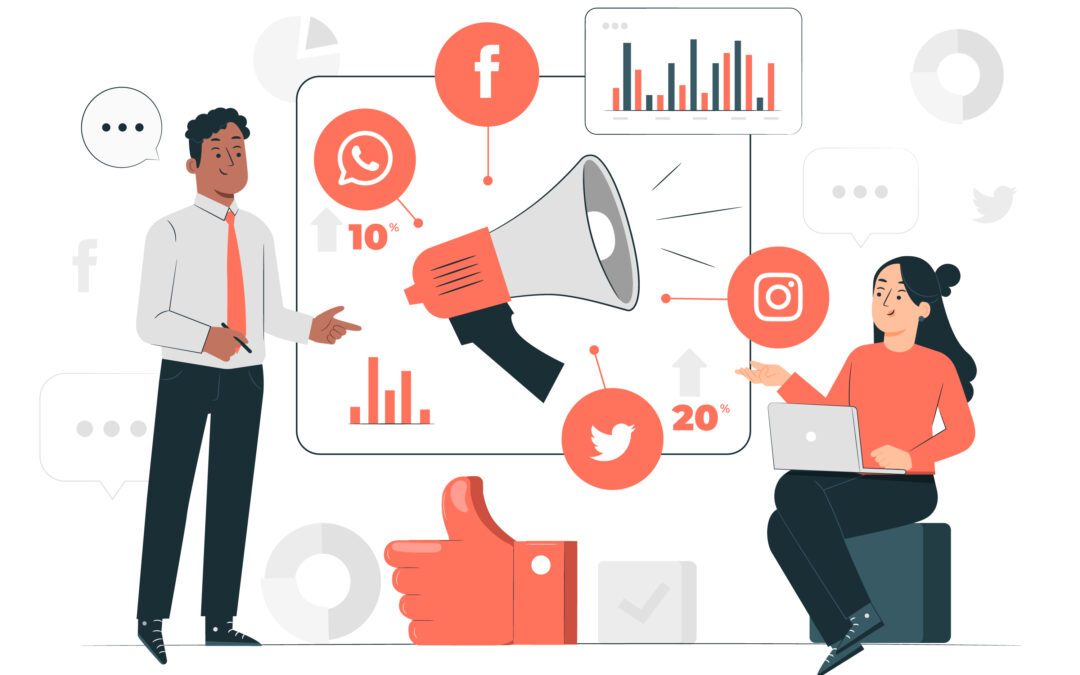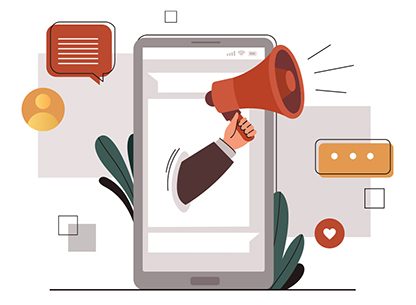![Most Effective B2B Influencer Marketing Tactics [Study]](https://bersondeanstevens.com/wp-content/uploads/2023/12/InfluencerMarketing.jpg)
by Lori Berson | Dec 28, 2023 | Marketing
Influencer marketing has become an essential part of the marketing mix for brands across many industries. Now, it is making major inroads into the B2B space as well. Recent research shows that B2B marketers are rapidly adopting influencer strategies and finding them effective for goals like increasing awareness and sales.
The question is no longer, ‘Does influencer marketing work for B2B?’ We already know the answer. The question is, ‘How can we get the best results from B2B influencer marketing?’ And, ‘What are the most successful B2B brands doing that the rest of us are missing?’
According to a new report from Ogilvy, three-quarters of B2B decision-makers worldwide currently use influencer marketing. Among those, over 90% plan to expand their use of influencers in the future. Another study from Ascend2, in partnership with TopRank Marketing, found that influencer marketing is already part of the mix for 85% of surveyed mid-market and enterprise B2B brands in the US.
As B2B marketers gain more experience with influencer strategies, they are becoming more sophisticated in their approaches. While 15% are just beginning with influencer marketing, about half are at a moderate maturity level. Nearly one-quarter have reached expert status, according to the Ascend2 report.

Influencer Marketing Benefits
The biggest payoffs reported are increased sales revenue and improved brand reputation. Two-thirds of respondents in the Ogilvy study said their B2B influencer campaigns had more impact on marketing performance than brand-only efforts.
In the Ascend2 research, current customers were the most commonly used type of influencer. However, brands at moderate maturity levels reported greater use of professional influencers and prospects compared to beginners. The Ogilvy findings suggest employees could also be untapped influencers, with 89% of C-suite marketers saying staff can add value when integrated into strategies.
How to Identify Influencers
When evaluating potential influencers, B2B brands look for several key traits. The most important is that the audience sees the influencers as trustworthy and they have a relevant audience or network. Professional credentials, audience size, and subject matter expertise are also key considerations.
Influencer Program Challenges
Executing an influencer program brings challenges like identifying and engaging influencers, measuring results, and creating content. Over half of respondents struggle to find and connect with the right influencers. Many also pointed to difficulties tracking performance, collaborating with influencers on content, and documenting an integrated strategy.
Artificial Intelligence Applications
Artificial intelligence (AI) is emerging as a useful tool for some of these hurdles. While content creation is the top AI application now, performance tracking and influencer selection follow closely behind. AI could help provide data-driven insights and efficiencies.
AI Influencer Tools
- Influencity – Build a stronger Influencer Relationship Management (IRM) strategy with access to comprehensive profile statistics on a platform that analyzes millions of the most influential content creators on social media today.
- Insense – Collaborate with multiple vetted creators at once. Get a steady flow of authentic UGC starting at $50 per video. Increase your ads performance with whitelisted ads.
- InsightIQ – Define, track, and boost influencer marketing ROI.
- Partnerize – End-to-end partnership platform that automates tedious tasks associated with partner management to help you find and convert your target audience at scale.
- Rad AI – Creative intelligence that brings new standards to influencer marketing.
- Squad – One-stop solution for influencer marketing at scale. Collaborate between influencers and brands.
- Tapasom – Discover the perfect influencer for your brand. Work together effortlessly. Make creator marketing easy.
For content, social posts are the most common influencer marketing format for B2B. Social media allows influencers to share information with their networks, an important value proposition, according to the Ogilvy research. Nine in ten B2B marketing leaders see social media influencers as vital for staying current in their industry.
Tactics
When it comes to tactics, content promotion by influencers is most effective for achieving objectives. Product endorsements, quotes for content, and event participation also deliver results for some B2B brands.
Summary
Influencer marketing adoption is accelerating among B2B marketers. As strategies mature, brands are rapidly expanding their programs to leverage influencers’ value for driving awareness, sales, and reputation. While challenges remain, AI and best practices are helping refine influencer identification, partnership, and measurement. The future is bright for B2B brands successfully harnessing the power of influencers.
The Ascend2 and TopRank Marketing results are based on a July-August survey of 425 B2B marketing decision-makers in management or higher roles representing mid-market (100 – 999 employees) and enterprise (1,000+ employees) B2B brands from various industries. The Ogilvy results are based on a survey of more than 550 senior B2B decision-makers working at companies of various sizes across 11 markets.
For help with your influencer marketing, schedule a call or email Lori Berson at lberson@BersonDeanStevens.com.
BersonDeanStevens has been a recognized brand strategy and marketing leader for over 25 years. We work in partnership with you to differentiate your brand and achieve your business goals. Client list.

by Lori Berson | Nov 13, 2023 | Marketing, Social Media
Do you ever feel like your social media efforts could be more efficient?
When managing social media, you have a lot on your plate – planning campaigns, creating content, monitoring conversations, and reporting to stakeholders. It’s easy for all the nitty-gritty details to start feeling overwhelming, getting in the way of the work that you need to focus on.
But what if you could effortlessly clear away the clutter, optimize your processes, and set your team up for social media success? With some thoughtful workflow improvements, the right tools, and a bit of strategy alignment across your organization, you can maximize your impact and use your limited resources wisely. To get started, here are a few tips:
Optimize Each Stage of Your Workflow
First, take a look at each stage of your social media workflow. Are there opportunities to alleviate manual tasks to helpful automation tools? Platforms like Hootsuite, Agorapulse, Buffer, and Sprout Social can schedule and publish your content calendar automatically. This small change translates to huge time savings that you can reinvest in a higher-level strategy.
Automate Reporting for Faster Insights
Next, speed up your reporting with easy-to-use analytics tools. Gathering metrics manually slows teams down and keeps your insights locked away in spreadsheets. But social media management platforms can automatically gather data and turn it into insightful presentation-ready reports your C-suite will love. Now your impact is clear, and your stakeholders have what they need to make smart, data-driven decisions.
Share Tools Company-Wide
As social media’s impact grows across the business, loop in key players from beyond your marketing team into your social efforts. For example: sales can analyze performance data and social listening insights to refine strategy. Customer service can foster engagement and provide responsive support. HR can build an employer brand and connect with candidates. Product teams can translate conversations into launches and strategies. Collaborating cross-functionally prevents duplication of efforts, siloes, and missed opportunities. To make this work, core social teams need to adapt as more stakeholders get involved by figuring out ownership and developing cross-functional expertise.
Integrate Social Media Tools With Your Tech Stack
Streamline your broader technology stack. Unified platforms with built-in workflows and integrations give your whole organization a holistic view of the customer without the hassle of constant tool-switching.
Refine Influencer and Partnership Processes
Simplify the way you work with influencers and brand partners. Managing a bunch of one-off email threads can get hectic fast. Look for ways to directly connect your influencer efforts with the rest of your social strategy for smoother execution.
Implementing even a few of these tips can make a massive difference in how much you accomplish each day. Best of all, with a few workflow tweaks, you can clear away complexity and make room for the work that takes your social media marketing to the next level.
Start optimizing your social media marketing today!
For help with your social media markering, schedule a call or email Lori Berson at lberson@BersonDeanStevens.com.
BersonDeanStevens has been a recognized brand strategy and marketing leader for over 25 years. We work in partnership with you to differentiate your brand and achieve your business goals. Client list.

by Lori Berson | Oct 24, 2023 | Marketing, Mobile marketing
SMS Marketing, better known as Text Messaging, is a direct, quick, and effective way to reach prospects and clients. With over 90% of text messages being opened and read within 3 minutes, it offers unparalleled open and response rates compared to other marketing channels like email.
What is SMS Marketing?
SMS stands for Short Message Service. SMS marketing is simply the use of text messaging to communicate promotions, offers, reminders, and other marketing messages directly to your clients’ mobile phones.
Unlike email marketing which can get lost in crowded inboxes, SMS cuts through the noise since it pops up immediately on the user’s phone screen. And since most people have their phones on them at all times, you can be sure your message will be seen.
Benefits of SMS Marketing
-
High open rates – almost everyone reads text messages shortly after receiving them. This gives your messages a much higher chance of being seen.
-
Improved client engagement – SMS creates a more personal connection with clients by communicating directly over their mobile phones – which leads to better engagement.
-
Real-time communication – send and receive messages instantly with clients for time-sensitive promotions or alerts.
- Works on any mobile phone – no need for a smartphone or mobile app.
-
Targeted campaigns – SMS allows you to segment your clients based on preferences and send targeted offers that are more relevant.
-
Analytics – get data on open rates, click-through rates, and other metrics to refine your campaigns.
- Cost-effective – SMS costs much less than other marketing channels like print, TV, and radio. The return on investment is very high.
Potential Drawbacks
- Can come across as intrusive if overused.
- Limited message length (160 characters max).
- Mobile carriers now offer spam filters for SMS.
- No formatting or attachments like email.
Overall, the advantages heavily outweigh the potential cons. As long as you get consent first and respect the user, SMS presents a huge opportunity for lead generation and sales.
How To Use SMS Marketing
Here are some tips on how to effectively leverage SMS for your business:
- Get consent first – never send unsolicited messages. Have clients and prospects opt-in by checking a box on your website, on feedback forms, or through sign-up forms.
- Consistently and prominently identify your business at the beginning of every text message you send to your subscribers. By including your name or brand at the start, you immediately establish a connection and make it evident who is sending the message.
- Send relevant and valuable content – only send messages that would genuinely interest your subscribers based on their preferences and history with your brand. Mix promotional content with value-added content. For example: you can send reminders, exclusive offers, event invitations, coupon codes, or even just entertaining content.
- Personalize the messages with their name when possible.
- Time it right – pay attention to when your clients are most responsive. You may get better results by sending messages in the mornings or evenings when people are more likely to have time to engage.
- Automate campaigns – the right marketing automation platform allows you to schedule and automate campaigns to save time.
- Track performance – use SMS analytics to see open rates, clicks, opt-outs, and optimize future messages. A/B test content when possible.
- Combine SMS with other channels – use SMS to supplement your email, social media, and advertising campaigns.
- Give opt-out option – always include instructions in your message for how to opt out of future messages. This is required by anti-spam laws.
- Make sure your website is optimized for mobile screens, so you can deliver a seamless browsing experience for users.
- Use an SMS platform that has a user-friendly interface and offers contact management, message scheduling, and analytics. It should also integrate with your other software platforms.
SMS marketing provides a simple yet highly effective channel for all businesses to connect and engage with prospects and clients.
Ready to get started with SMS marketing?
Our team can help you set up SMS that seamlessly integrates with your existing systems, and develop effective campaigns tailored to your business.
For help with your SMS markering, schedule a call or email Lori Berson at lberson@BersonDeanStevens.com.
BersonDeanStevens has been a recognized brand strategy and marketing leader for over 25 years. We work in partnership with you to differentiate your brand and achieve your business goals. Client list.
![Most Effective B2B Influencer Marketing Tactics [Study]](https://bersondeanstevens.com/wp-content/uploads/2023/12/InfluencerMarketing.jpg)


